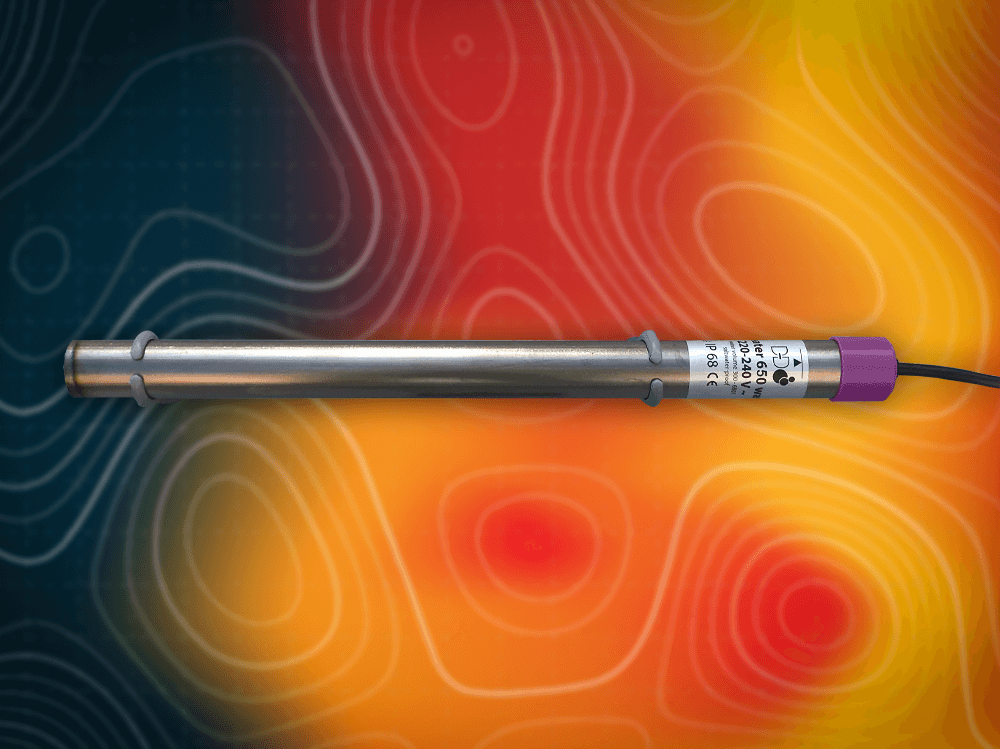Why isn't my aquarium heater working?
Check the aquarium heater is plugged in
The first thing to do is check that it's plugged in and switched on at the socket. With so many black plugs and cables, you could be forgiven for leaving it unplugged during a maintenance session. If it's plugged into a multi socket try plugging it into a different socket. Cut-price four-way and six-way adaptors are prone to individual socket failure.
Use a thermometer to check the temperature
Next, use a thermometer to check the water temperature inside the aquarium. Then check the temperature that you adjusted the heater knob to on the top of the unit. If the aquarium heater is pre-set to 24C and the water is 25C or above, for example, the heater won’t come on, or display that working light. That’s because the water is warmer than the heater is set to, so it will stay off until the water cools.
Check the aquarium heater light is on
If its set to 24C and the water temperature is below that, turn the heater in the water so that you can see the “on” light - usually, an orange led light built into the top of the glass tube. Observe the heater for a few minutes. It’s normal for fish tank heaters to come on for a few seconds or minutes and then go off for a few minutes in between heating sessions.
If the light is going on and off the heater is doing what it should be doing, and working normally. Give it time to heat the water.
Feel the heater to check if its warm
Gently put your hand next to the heater (underwater) and feel if any warmth is coming off it. Look at the heater underwater and see if any swirly lines (convection currents,) are being formed around the heating element. If they are, it's working as it should.
Check the fuse
If the heater is not displaying an “on” light and doesn’t feel warm underwater, check the fuse. This may need replacement.
Turn the temperature control knob
If the heater is coming on but the water is colder than it should be your aquatic life there are some checks there too. First, check the control knob on the top. Some aquarium heaters may have numbers but most have very little other than the tiniest “+” and “-”. Turn the knob while in the water and see if the heater kicks in. If it does, it was just set too low.
Double-check the thermometer
What thermometer are you using? Digital thermometers may need their batteries replaced and some have a probe on a cable that may have come out of the water, measuring the cooler room temperature instead. Use a second thermometer of a different type for a second opinion and peace of mind.
Have you had a power cut?
For how long has the water been too cold? If the heater usually heats the water no problem but the water is cold now, have you just done a water change? Or has there been a power cut while you’ve been out? Is the other equipment working? Has the power tripped? How are the fish?
Is the fish tank heater powerful enough for your aquarium?
If it's a new tank it may take 24 hours for aquarium heaters to warm to the correct temperature for tropical fish, from cold tap water. If it's been longer than 24 hours is the aquarium heater powerful enough for the volume of water? You need at least one Watt of heater power per litre of aquarium water. You may need more when the weather is cold, or if the aquarium is in a cooler location.
Check the wattage of the heater, e.g. 100 Watt, and double-check the volume of the aquarium, which in that case should be no more than 100 litres. But these are based on warm, modern homes with an ambient temperature closer to 18-20 degrees Celsius. If your house is colder, double the wattage to two Watts per litre. Aquarium heaters are not suitable to be used outside.
Check the heater for damage
Occasionally submersible aquarium heaters can fail, and some of the best aquarium heaters are programmed to fail in the off position. Never take a plugged-in heater out of the water. Always switch it off and unplug it first before carefully removing it from the suction cups.
If the glass tube, power cable or plug is damaged it must be discarded. Replace with a new one and keep the proof of purchase for the future. Buy a spare for stress-free fishkeeping or run two smaller models so that one will kick in if one fails.









